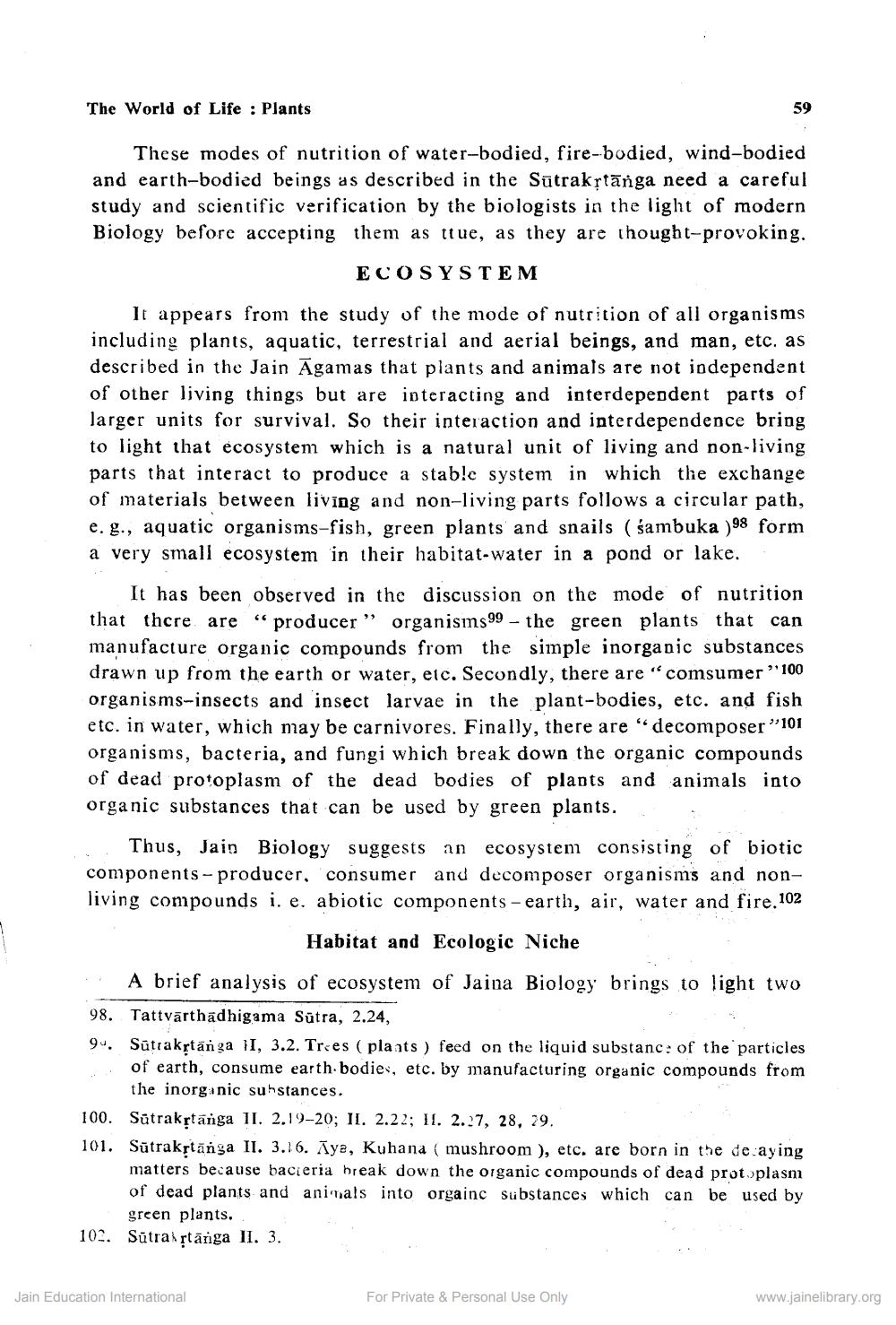________________
The World of Life : Plants
59
These modes of nutrition of water-bodied, fire-bodied, wind-bodied and earth-bodied beings as described in the Sūtrakrtānga need a careful study and scientific verification by the biologists in the light of modern Biology before accepting them as true, as they are thought-provoking.
ECOSYSTEM
It appears from the study of the mode of nutrition of all organisms including plants, aquatic, terrestrial and aerial beings, and man, etc. as described in the Jain Agamas that plants and animals are not independent of other living things but are interacting and interdependent parts of larger units for survival. So their interaction and interdependence bring to light that ecosystem which is a natural unit of living and non-living parts that interact to produce a stable system in which the exchange of materials between living and non-living parts follows a circular path, e. g., aquatic organisms-fish, green plants and snails (sambuka )98 form a very small ecosystem in their habitat-water in a pond or lake.
It has been observed in the discussion on the mode of nutrition that there are “producer” organisms99 – the green plants that can manufacture organic compounds from the simple inorganic substances drawn up from the earth or water, etc. Secondly, there are "comsumer "100 organisms-insects and insect larvae in the plant-bodies, etc. and fish etc. in water, which may be carnivores. Finally, there are "decomposer ”101 organisms, bacteria, and fungi which break down the organic compounds of dead protoplasm of the dead bodies of plants and animals into organic substances that can be used by green plants.
Thus, Jain Biology suggests an ecosystem consisting of biotic components - producer, consumer and decomposer organisms and nonliving compounds i. e. abiotic components - earth, air, water and fire.102
Habitat and Ecologic Niche
A brief analysis of ecosystem of Jaina Biology brings to light two 98. Tattvārthadhigama Sutra, 2.24, 94. Sūtrakrtānga 11, 3.2. Trees ( plaats ) feed on the liquid substanc: of the particles
of earth, consume earth. bodies, etc. by manufacturing organic compounds from
the inorganic suhstances. 100. Sūtrakstānga II. 2.19-20; II. 2.22; II. 2..7, 28, 29. 101. Sūtrakrtānga II. 3.16. Āye, Kuhana ( mushroom ), etc. are born in the decaying
matters because bacieria break down the organic compounds of dead protoplasm of dead plants and animals into orgainc Substances which can be used by
green plants. 102. Sūtra stāriga II. 3.
Jain Education International
For Private & Personal Use Only
www.jainelibrary.org




